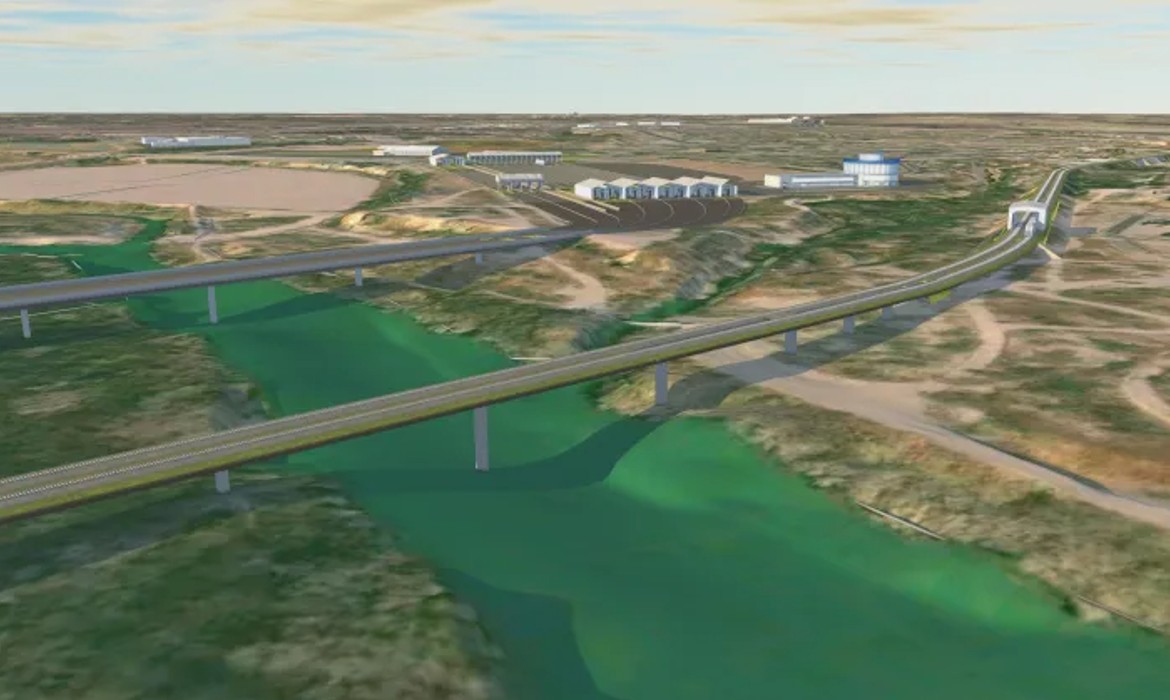
The U.S. government has granted permission to Maverick County, Texas, to construct, maintain, and operate a vehicle, pedestrian, and rail crossing between Texas and Coahuila, a project proposed by Green Eagle Railroad (GER).
In this regard, a bridge will be built, along with its access points and any associated land, structures, facilities, or equipment. It will be located approximately two miles north of Eagle Pass Bridge I, at the northwest edge of the city of Eagle Pass.
“The construction, maintenance, and operation of the border facilities will be carried out in all material aspects as described in the application dated October 17, 2023,” said the White House in a statement.
The permit signed by President Joe Biden details that the norms and forms of construction, maintenance, and operation of the federal, state, and local border facilities must be met, as well as mitigating environmental impacts, hazardous substances, and more.
Additionally, the requirements of the International Boundary and Water Commission, United States and Mexico, must be met, and the border facilities plan must be provided at the beginning of operations, among other requirements.
“Construction will not begin until the Department of State has notified that it has completed its exchange of diplomatic notes with the Government of Mexico regarding the authorization,” it stated.
Carlos Barreda Westphal, commercial representative of Stella-Jones in Mexico, considered that the construction of this new rail bridge, besides alleviating car traffic in Piedras Negras, will provide an alternative secondary crossing in the event of future border closures.
“This is an excellent signal for Mexico and especially for the incoming administration. From a political perspective, it is a clear sign of openness, opposed to the Republican idea of building a border wall, and in light of the USMCA review scheduled for mid-2026. From a commercial point of view, it is also great news because its purpose is to boost the commercial exchange of goods despite the migration incidents that occurred in the area during the last quarter of the previous year,” he said.
He also mentioned in an interview with T21 that it is a good signal from the country’s main trading partner, as it will encourage the arrival of capital investments to the northeastern region, where various companies plan to relocate in the coming years.
According to the U.S. Bureau of Transportation Statistics (BTS), Laredo, Eagle Pass, and El Paso are the main rail connection ports with Mexico.
For the first quarter of 2024, the total exchange between Mexico and the United States was $200.14 billion.
By rail: $24.341 billion (12.2% of the total).
Of the total rail exchange:
- Laredo contributes $10.542 billion (43.3% of the total).
- Eagle Pass contributes $8.581 billion (35.3% of the total).
Of the total exports from Mexico to the United States by rail, which amounted to $15.968 billion in the first quarter of 2024, Eagle Pass contributed $6.667 billion, that is, 42% of the total.
On April 1, T21 reported that the Surface Transportation Board (STB) in the United States would prepare an Environmental Impact Statement (EIS) on the construction and operation of this second rail bridge.
The company, a subsidiary of Puerto Verde Holdings (PVH), seeks to carry out this project between Eagle Pass and Piedras Negras, approximately 1.3 miles (a little over two kilometers), which aims to streamline binational trade between the United States and Mexico by easing rail and truck congestion and reducing cross-border wait times, among other benefits.
The line would be a double-track rail corridor with no road/rail crossings that would extend from the interchange point with Union Pacific (UP) near Clark’s Park yard, cross the Rio Grande on a newly constructed bridge, be fully fenced, monitored and patrolled by security personnel, and include a new vehicle road.
Additionally, it includes a control tower and inspection facilities for both the rail line and the road, with work carried out by Customs and Border Protection (CBP).
Through this construction, a variety of goods would be moved. Trains would operate with approximately 150 cars with two locomotives at the front end and one at the rear.
This project requires authorization from the STB, which will analyze the draft EIS, the potential impacts related to transportation, air quality and climate change, noise and vibrations, biological, water, visual, and cultural resources, land use, geology and soils, energy resources, socioeconomics, environmental, cumulative, and cross-border impacts.
Comment and follow us on X: @evandeltoro / @GrupoT21















